John A. Moran Eye Center Neuro-Ophthalmology Collection: A variety of lectures, videos and images relating to topics in Neuro-Ophthalmology created by faculty at the Moran Eye Center, University of Utah, in Salt Lake City.
NOVEL: https://novel.utah.edu/
TO
| Identifier | Title | Description | Subject | ||
|---|---|---|---|---|---|
| 51 |
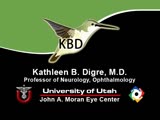 |
2-9 | Monocular Pendular Nystagmus | Example of a patient with monocular pendular nystagmus, with discussion of situations in which this condition is seen: acquired disorder of the visual-sensory pathway, and acquired disorder of the brain stem (e.g. multiple sclerosis). | Monocular Pendular Nystagmus; Sensory Nystagmus; Pendular Nystagmus; Acquired Pendular Nystagmus |
| 52 |
 |
A-scan_technique | A-scan Technique | This video describes and demonstrates the A-scan examination technique for examination of the eye using ultrasonography. | Ultrasonography Eye Examination Techniques |
| 53 |
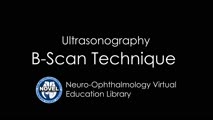 |
B-scan_technique | B-scan Technique | This video describes and demonstrates the B-scan examination technique for examination of the eye using ultrasonography. | Ultrasonography Eye Examination Techniques |
| 54 |
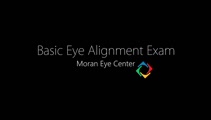 |
Basic_Eye_Alignment | Basic Eye Alignment Exam | Demonstration of basic eye alignment examination. Includes: a. Tools b. Cover-Uncover and SPCT c. Alternate Cover and APCT d. Maddox Rod Testing | Examination, Ocular; Basic Eye Alignment |
| 55 |
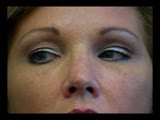 |
Bell_J_Duanes_type_1 | Duane's Syndrome Type 1 | Clip of patient with Duane's Syndrome Type I. Presented at the Neurology Grand Rounds in Fall 2011 at the University of Utah. Presentation can be found in this collection at: Why Don't You See Double? http://content.lib.utah.edu/u?/EHSL-Moran-Neuro-opth,132 Disease/Diagnosis: Duane's Syndrome Type ... | Duane's Syndrome; Duane's Type I |
| 56 |
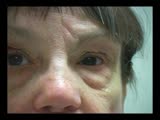 |
Bell_J_Duanes_type_III | Duane's Syndrome Type 3 | Clip of patient with Duane's Syndrome Type III. Presented at the Neurology Grand Rounds in Fall 2011 at the University of Utah. Presentation can be found in this collection at: Why Don't You See Double? http://content.lib.utah.edu/u?/EHSL-Moran-Neuro-opth,132 Disease/Diagnosis: Duane's Syndrome Ty... | Duane's Syndrome; Duane's Type III |
| 57 |
 |
How2use | Tour of the Direct Ophthalmoscope | This clip describes the parts and operation of the ophthalmoscope as an ocular examination tool. Includes adjustment of aperture size and adjustment of lenses. | Direct Ophthalmoscope; Examination, Ocular |
| 58 |
 |
Immersion_technique | Ultrasonography: Immersion Technique | This video describes and demonstrates the immersion technique for examination of the eye using ultrasonography. | Ultrasonography Eye Examination Techniques |
| 59 |
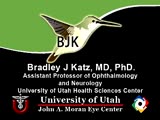 |
Katz_clip | Bilateral Asynchronous Blepharospasm with Facial and Cervical Dystonia | Bilateral Asynchronous Blepharospasm with Facial and Cervical Dystonia. | Blepharospasm |
| 60 |
 |
Katz_seesaw | See-saw Nystagmus | 7-year-old female whose mother noticed her eyes "bouncing" for 2 months. Visual acuity 20/70 OD and 20/40 OS, reduced color vision OU, and no afferent pupillary defect. See-saw nystagmus documented with videography. Manual perimetry revealed a complete right homonymous hemianopia. MRI revealed a lar... | See-saw Nystagmus |
| 61 |
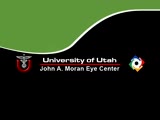 |
NOVEL_Moran_1-8 | Progressive Supranuclear Palsy | Progressive Supranuclear Palsy | Progressive Supranuclear Palsy |
| 62 |
 |
NOVEL_Moran_2-11 | Cyclic Oculomotor Palsy | Example of patient with cyclic oculomotor palsy. | Cyclic Oculomotor Palsy; Cyclical; Cyclic Oculomotor Paresis |
| 63 |
 |
NOVEL_Moran_2-14 | Blepharospasm with Apraxia of the Eye | Lid Opening; Blepharospasm; Apraxia of Eyelid Opening | |
| 64 |
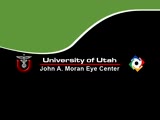 |
NOVEL_Moran_2-16 | Unilateral Blepharospasm | Example of patient with unilateral blepharospasm. | Blepharospasm |
| 65 |
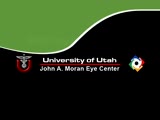 |
NOVEL_Moran_2-17 | Wall-Eyed Bilateral Internuclear Ophthalmoplegia (WEBINO) | Example of patient with horizontal binocular diplopia. Demonstration of exam, which shows alternating exotropia in cover test. As patient follows object, right eye does not pass the midline as the object moves to the left, while left eye go slightly past the midline, but does not abduct completely. ... | Internuclear Ophthalmoplegia; WEBINO |
| 66 |
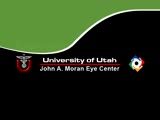 |
NOVEL_Moran_2-19 | Aberrant Regeneration of the Lid | Patient with left third nerve palsy demonstrates anisocoria and mild vertical gaze limitation and aberrant movement of the left upper lid. Patient is instructed through all gaze positions. Left upper lid does not descend during downgaze but retracts instead. | Third Nerve Palsy; Aberrant Regeneration of Third Nerve; Aberrant Reinnervation of Third Nerve |
| 67 |
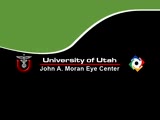 |
NOVEL_Moran_2-22 | Fourth Nerve Palsy | Demonstration of examination of patient who experienced blurry vision and pain in the left eye. Demonstrates checking of eye movements, focusing on object while each eye is covered and uncovered, turning head both ways and repeating. Shows limitation of depression in adduction of left eye, left hype... | Fourth Nerve Palsy; 3 Step Test |
| 68 |
 |
NOVEL_Moran_2-23 | Duane's Syndrome | Example of patient with Duane's Syndrome. Patient is led through instructions for pursuit. | Duane's Syndrome |
| 69 |
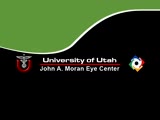 |
NOVEL_Moran_2-25 | Superior Oblique Myokymia | Close-up video of a patient with superior oblique myokymia (no audio.) | Superior Oblique Myokymia; Myokymia |
| 70 |
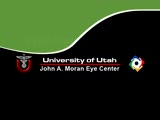 |
NOVEL_Moran_2-26 | Wall-Eyed Bilateral Internuclear Ophthalmoplegia (WEBINO) | Example of patient with Wall-Eyed Bilateral Internuclear Ophthalmoplegia. Patient is led through instructions for direction and distance of gaze. | Internuclear Ophthalmoplegia; WEBINO |
| 71 |
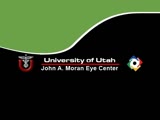 |
NOVEL_Moran_2-28 | Aberrant Regeneration of the Third | Patient with a right third nerve palsy demonstrates ptosis, anisocoria and ophthalmoplegia. During attempted downgaze, the right upper lid flutters back up (aberrant movement) and remains retracted. | Third Nerve Palsy; Aberrant Regeneration |
| 72 |
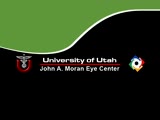 |
NOVEL_Moran_2-29 | Ocular Myotonia | Example of patient with ocular myotonia. Patient is led through instructions for direction of gaze and opening and closing of eyes. Right eye is shown to be stuck in position after held gaze to the left and right, with very slow relaxation back into forward gaze. | Ocular Myotonia; Ocular Neuromyotonia; Dystrophies |
| 73 |
 |
NOVEL_Moran_2-30 | Bilateral Internuclear Ophthalmoplegia | Example of patient with bilateral internuclear ophthalmoplegia. Patient is led through instructions for direction and distance of gaze. | Internuclear Ophthalmoplegia |
| 74 |
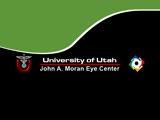 |
NOVEL_Moran_2-31 | Marcus Gunn Jaw Winking | Example of patient with Marcus Jaw Winking. Patient is led through instructions for movement of jaw (open, close, back and forth), with eyelid seen to be affected. Patient is then led through instructions for direction of gaze and pursuit. | Marcus Gunn Jaw Winking |
| 75 |
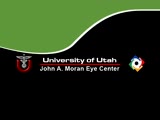 |
NOVEL_Moran_2-5 | Blepharospasm | Example of patient with blepharospasm. Patient is led through instructions for direction of gaze and opening and closing of eyes. Patient is led through same exercises again after receiving indomethacin treatment. | Blepharospasm |
